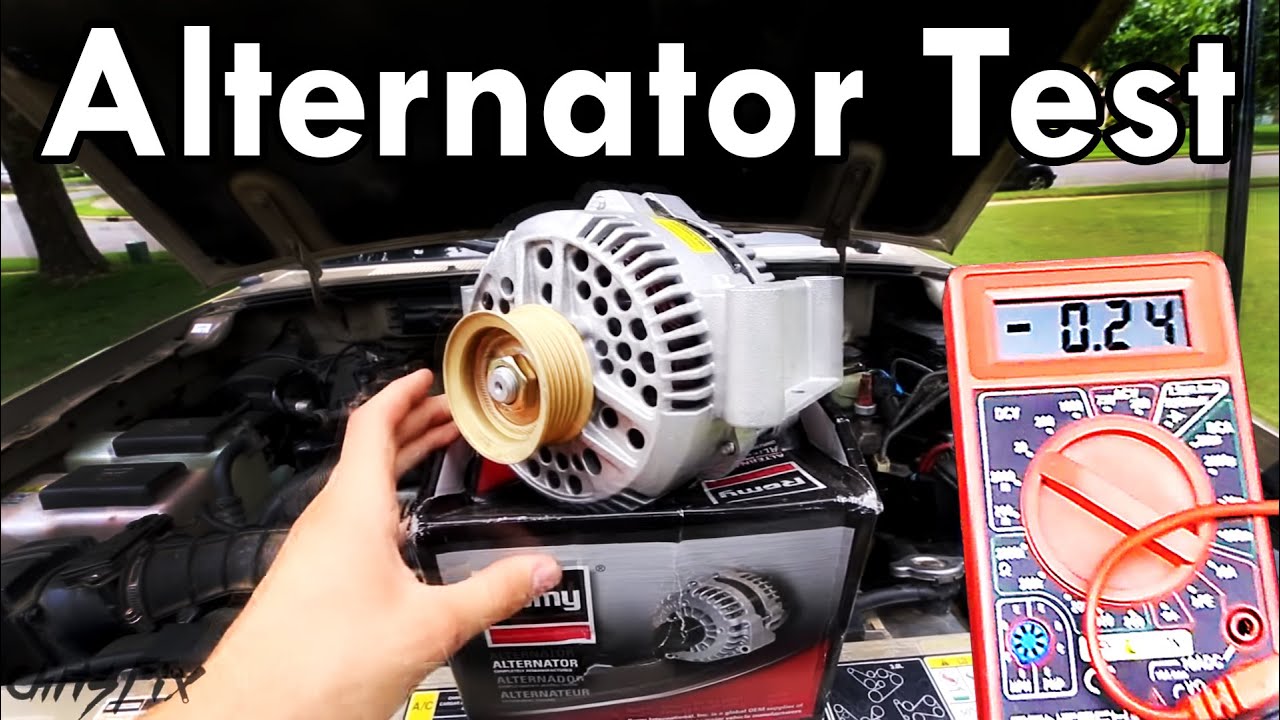How To Test Alternator Without Multimeter(Tips)

How To Test Alternator Without Multimeter: It can be challenging to test an alternator without a multimeter, but it is feasible if you have the necessary equipment and know-how. One must first recognize the alternator’s three major components: the stator, the rotor, and the rectifier. The windings are housed in the stator, which is the fixed portion of the alternator. The alternator’s rotor is the moving component that houses the magnets. A bridge device, the rectifier inverts AC current into DC current (DC). Enough Info

Chris Fix 9:06
Read Also: How To Cope With A Long-Distance Relationship
FAQs & Answers On How To Test Alternator Without Multimeter
1, How do I know if it’s the alternator or regulator that is damaged?
You can only find out for sure if you turn off the voltage regulator and restart the engine. The regulator has broken if the engine starts and all of the vehicle’s loads work well while the alternator is malfunctioning.
2, Will this test work on newer cars?
However, this method is not advised for modern automobiles; a multimeter is still the best tool for the job.
3, Can you check an alternator by disconnecting the battery?
The alternator can be tested without the car’s battery if desired. It should be noted, nevertheless, that this isn’t the most reliable alternator test method. Get your car checked by a professional technician for the most reliable results. How To Wash Football Gloves( All You Need To Know)
4, Does this not damage the Electrical Control Unit?
Even though the distribution box and fuses serve to protect the electrical control unit, it is still possible for it to be damaged during this test due to the car’s internal wiring. Nonetheless, care should be taken whenever such tests are performed, and if you are not confident in your abilities, a local electrician or mechanic should be contacted for assistance.
Read Also: 185+ Deep Love Messages For Her (Melt Her Heart)
What does an alternator do in a car engine?
When mechanical energy is used, an alternator is able to transform it into electrical energy. It is widely employed in vehicles powered by internal combustion engines to run the car’s electrical components. The car’s lights, radio, and other electronic components are all run by the alternator, which also recharges the battery. The alternator is a generator that supplies energy to the battery and the car’s electrical accessories when the engine is running. The alternator can’t charge the battery or power the car’s electronics if the battery is dead or the engine isn’t running.
Six years or 100,000 miles, whichever comes first, is about the usual lifespan of an alternator. However, this varies from person to person and from situation to situation on the road. Your alternator will need to be replaced more regularly if you do a lot of short trips or drive in heavy traffic. Keep an eye on the engine compartment temperature to ensure the alternator is not overworking and your alternator lasts as long as it should. How To Immigrate To Canada Without a Job Offer
If you suspect that your alternator is failing, keep an eye out for these symptoms. One is turning down the brightness of lights or other electrical fixtures. As a result of the alternator’s inability to generate enough electricity, some of your car’s accessories may dim or stop working if you drive about with a faulty alternator. Unusual sounds originating from the engine area are another symptom of an alternator that is on the verge of failing. A whining or grinding sound could be the beginning of the alternator’s failure. The need to repeatedly jumpstart your vehicle or having the battery die on you are more indicators of an alternator that is on the fritz.
Advised Caution
This alternator-testing procedure is extremely subpar. I would only attempt this with a classic car, as newer models have far more sophisticated electrical processors and engine control units. There is a serious danger of melting all the electronics in your car if you are not familiar with its electrical requirements.
Simply said, I think you should shell out the cash for a decent multimeter. If I didn’t have all the information, I wouldn’t attempt this.
Read Also: How To Tell If Your Car Is Bugged And What To Do
Equipment You’ll Need To Know How to Test Alternator
Examining your alternator’s condition does not call for a multimeter and may be done with minimal effort. Here is a list of them:
- Anti-corrosion battery cleaner;
- Protective eyewear and gloves;
- Spanner
Testing Your Alternator Without A Multimeter
Spotting the problem
When the alternator in your car is acting up, you’ll probably get a warning that states the battery needs to be checked. This light indicates that the battery voltage is low. In most cases, this can signify either of two things. Namely: How To Steam Buns Without A Steamer(Ultimate Guide)
- If the battery is dead, it needs to be replaced.
- As a result of the damage, the alternator must be replaced.
Since you don’t have a multimeter, figuring this out will be difficult. Instead, you’d use a multimeter to check the battery’s voltage while the engine was on. There is usually a range between 11.4V to 12.6V.
In the following steps, I will demonstrate how to conduct your test without a multimeter.
Setup and Safety
Turning off the car’s engine is the first step. Please wait a minute or so for it to cool down. This is done to ensure that the internal circuitry remains at a constant temperature and that no electrical current flows through the elements. When the car has stopped running, it’s time to don your safety goggles and gloves. When working on your car’s engine, this is a vital must.
A shocking number of injuries have occurred that may have been avoided if standard safety procedures had been followed. It’s safe to assume that, if you’re taking on this project, you’re at least somewhat familiar with working on your car’s engine, but that doesn’t mean you shouldn’t take precautions like wearing gloves and safety glasses whenever you do so.
Finally, make sure the battery terminals are clean. To get rid of the corrosion, use a quality battery cleaning.
Physical verification
Without a multimeter, we’ll have to be extra careful when checking things out in the real world. First, check that the pulley cable is tightly wound around the alternator’s shaft and that it doesn’t feel loose. Afterward, you should give the alternator a quick once-over for external signs of damage or burns in the internal wiring.
As a last step in the physical verification process, I check that the alternator has cooled down and that the air vent to the motor winding is clear of any debris or obstructions that could lead to overheating. If the alternator passes the physical verification test, you can proceed to the next phase.
Start the car and switch it off
Loosen the negative terminal of your battery now, before starting the engine, so that you can take it out while the vehicle is running. Turn on the vehicle’s engine and allow it to run at a slow, steady speed for a minute or so. Now disconnect the battery’s negative end and proceed. How To Apply For UK Student Visa In Nigeria
The alternator is broken if the car cuts off unexpectedly.
Conclusion
This workaround for testing an alternator without a multimeter is, as you can see, straightforward. However, it might be extremely risky if you are not familiar with the electrical system of your car. If you are not cautious, you may end up burning out all of the parts. If you decide to take this path, be sure you know exactly what to expect. 150 Heartwarming Good Morning Messages For Friends
Read Also: How To Test A Capacitor With A Multimeter




